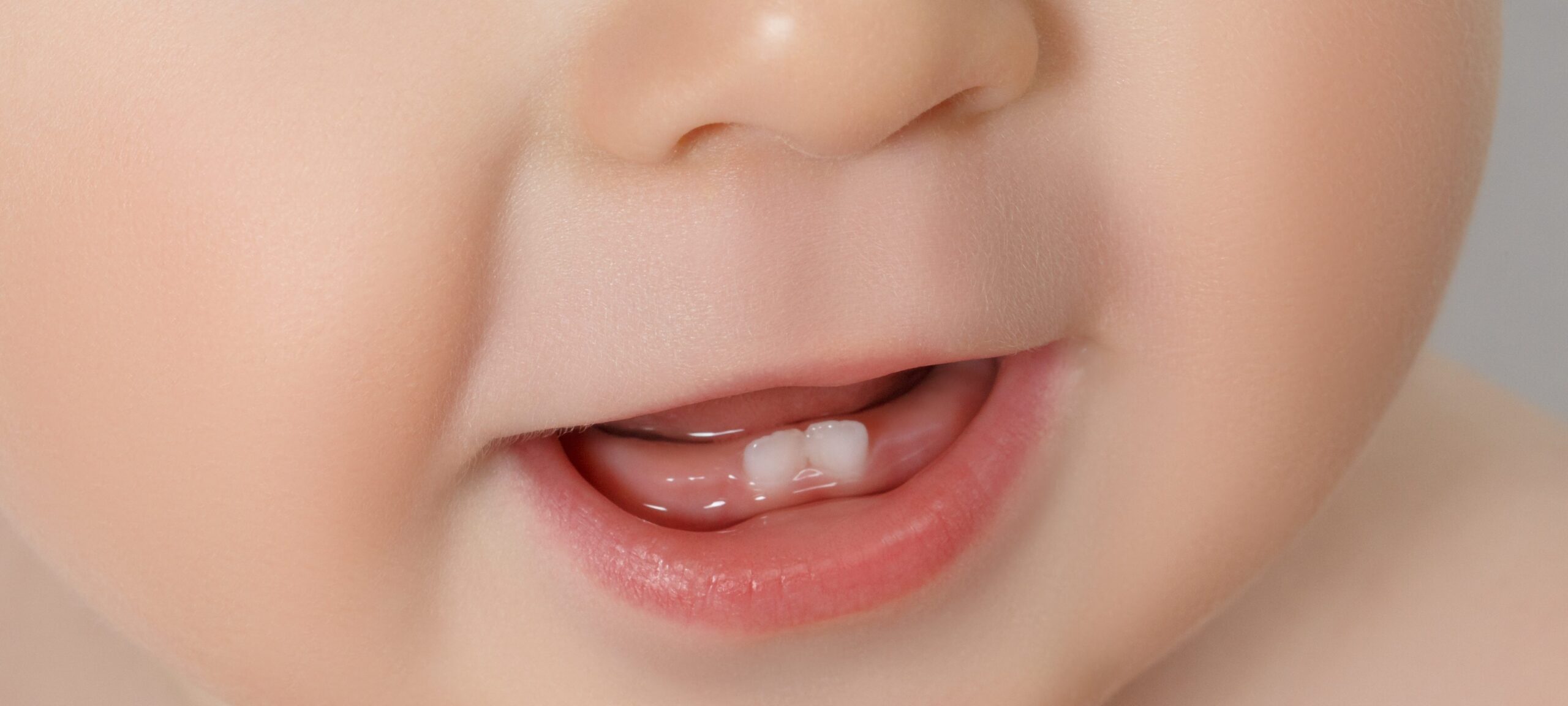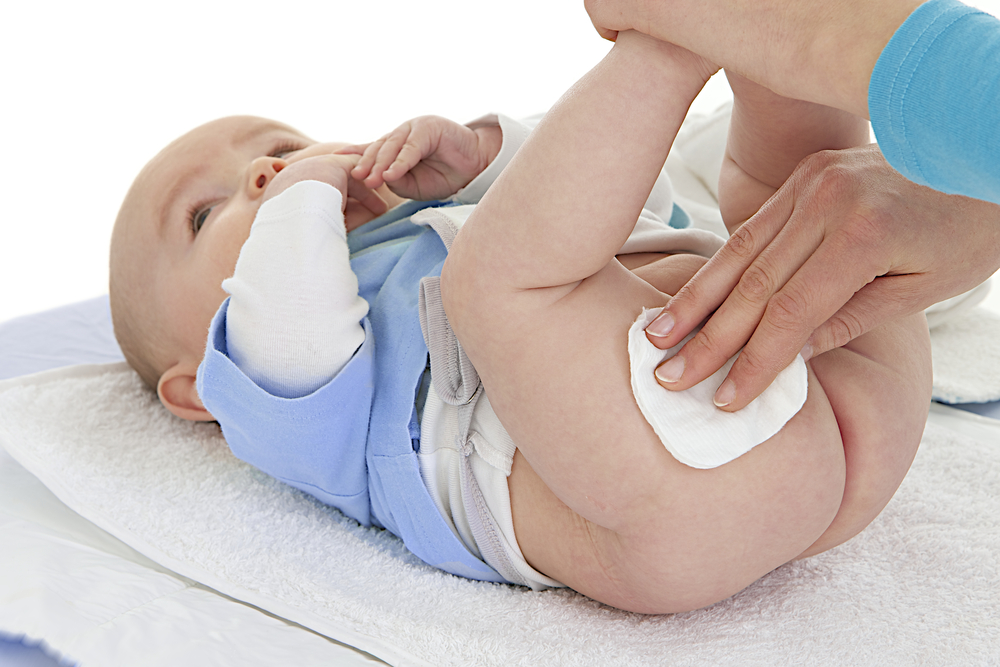
Identifying Teething Symptoms and Learning How To Cope With Them

Teething was the bane of my life. Jake started to show teething signs at 6 weeks of age and started to cut them at 5 months. People may tell you they are too young but this isn’t true, did you know that a baby can be born with teeth?! His earliest teething symptoms were the typical dribbling and chewing but as each new tooth rumbled we began to identify others, some of which were a little bizarre. I talk about 22 teething symptoms in my book but for this article, I have picked just a selection which should help you to identify and learn how to deal with the ones you may well be seeing in your baby.
The Main Teething Symptoms Seen In A Baby:
Pain

This is one of the most obvious teething symptoms and most babies will show pain at some point during the teething process. It is usually displayed through crying, tugging at the ears and chewing profusely. It may start long before you see a tooth due to the ‘rumbling’ going on below the gum line. The teeth move in the jaw prior to eruption and can often be seen peeking up to the gums as a white lump and then reducing back down to nothing again. We can’t see what our poor little mites are going through but we can look for these signals and react in time in order to provide some pain relief. Infant paracetamol and Ibuprofen will both help to reduce pain, bring down a fever and calm a baby. As long as you are following the dosage rates please don’t worry about giving a medicine during the teething development. I have heard parents say it was a last resort before – why should it be? If you had an ache or pain you would take some tablets so do think of easing theirs before it increases. Other remedies for pain include amber jewellery, teething gels, teething granules, teething toys to help soften the gums and distraction techniques.
Flushed Cheeks
This is a classic sight in a teething baby and is caused by the inflammation of the gums. This will clear once the tooth appears but you can provide teething granules to help calm the symptom down. Always keep a close eye on your baby’s temperature, though, and if you are concerned follow the instructions in the next category.
Fever
Feeling that the skin is hot is not an indication of a fever. Teething may bring flushed cheeks and a warmer baby due to pain but in order to check for a fever, you need to use a thermometer. The NHS guidelines are that a fever is over 37.5° and you should seek medical advice if this increases above 39°. You should always remove clothing first to try to reduce their body temperature. Take a layer off at a time and see if it helps. Do not completely strip them down or attempt to reduce their fever with a cold flannel as this will cause their body to go into shock. Infant paracetamol and Nurofen will also help in reducing their fever.
Dribbling and Dribble Rash

Babies do naturally dribble a lot due to the salivary glands increasing in activity from 3 months of age but once teething begins this will become more excessive. And of course, with this, they are at a higher risk of developing an uncomfortable dribble rash. You need to tackle this teething symptom by ensuring you are keeping clothing dry or changing their clothes more often when it becomes too wet. It can be so tempting to keep on wiping the dribble away but this can often aggravate the rash further. Your best tool would be a dribble bib to keep your baby’s clothes dry and dabbing the dribble away with a clean, soft muslin (do not use wipes). Then apply a barrier cream to protect the skin. Make sure you also check in the folds of skin babies have under their chin. It is easy for the dribble to linger here and get missed – a perfect breeding place for germs! We used an Amber anklet once Jake’s molars started to cause him issues and we noticed a considerable improvement in his dribbling. He also became calmer and slept better.
Earache

This is clearly seen by your baby pulling and rubbing their ears. As the mouth, nose, throat and ears are all linked it is only natural that teething pains will manifest themselves in other areas. The pain from the jaw often shoots up the face to the ear which can cause your baby to scream out and be difficult to put down to sleep. You need to keep on top of your pain relievers – Infant Paracetamol and Ibuprofen – which you can alternate throughout the day. You may also find that they will sleep much more happily on your chest or slightly raised up as laying flat increases the pain. I found that a reflux cushion helped with my son’s sleeping at night. If they are in a lot of pain and seem more distressed than usual please seek medical advice in case of an ear infection.
Loose Stools
The excess saliva can go on and have further effects on their little bodies. One of the most common is loose stools. As the saliva works its way into the stomach it causes an acidic build-up which affects their bowels. This can often lead to nappy leaks and an increase in the movements. I would definitely recommend taking a change of clothes, plenty of nappies and wipes (we used reusable the second time around and saw a huge improvement in containment) plus lots of nappy bags/wet bags to pop dirty clothing into every time you go out – you don’t wanna get caught out!
Teething granules will help to settle their little tummies as they contain chamomile which is soothing on their systems.
Nappy Rash

The inevitable happens from all those loose bowel movements and little red, sore, rashy bottoms are seen during the teething process. The urine will also become more acidic from the saliva being swallowed which will add to nappy rash issues. The best remedy for this is nappy free time to allow the area to dry out and heal. Just watch out for any accidents! I would recommend using warm water and cotton wool or reusable wipes if the rash is very raw and ditching the disposable wipes for the time being. A barrier cream, vaseline or olive oil will provide a waterproof barrier between the wet nappy and the skin. I used to dab my son’s bottom dry with a soft cloth before applying anything to ensure the rash was completely dry. The doctor can prescribe creams if the rash becomes severe.
Lack of Appetite
There could be several reasons as to why a baby may lose their appetite during teething. The first being that the painful and swollen gums mean they don’t feel like eating. They may feel sick from the extra acidity in their stomachs (caused by the excess saliva) or what you are offering may be too hard or hot for their aching mouth. At this time you need to listen to their needs and ensure they are still eating what they can manage so they don’t start to lose weight or wake up hungry in the night. It is easy to alter meals for just a few days when their pain is higher. Yoghurts, soups or purees are popular choices. You must ensure they are taking in enough fluids if they are off their food – you don’t want a dehydrated baby. Homemade ice lollies will help with encouraging them to eat and will also soothe their gums. Teething granules will ease any tummy pains and help to calm your distressed baby.
Some of the more unusual teething symptoms we saw with Jake was increased ear wax, coughing, hiccups, sickness, eczema and irritability. Of course, the one we all have to endure is the lack of sleep and this can only be dealt with in the best way which suits your family. You may choose to co-sleep, try amber jewellery, drive around until they doze off or rock them until you burn all that baby weight off! Whatever your methods, you should always do what is best for your own baby. Take others advice but don’t feel you have to follow it, ignore any negative comments and don’t let anybody else judge you. Only you know what the situation is and in our case, teething was the worst stage we have gone through. It was stressful, exhausting and worrying. All I wanted to do was help my baby and to be able to take all his discomfort and upset away. We all have our different ways of parenting and coping and that is fine. Teething can last until a child is three years old so you need to learn how to listen to their needs and meet them whilst trying to maintain your normal life routines. It is a long, slow process but I can ensure you that there is a light at the end of that tunnel.
Good luck with tackling those teething symptoms and if you need more advice please do leave me a comment or come and follow me on social media.
And if you would like to learn more about the teething process and teething symptoms you can purchase my book ‘Your Teething Baby, from one parent to another’ on Amazon.

Pin for later:





